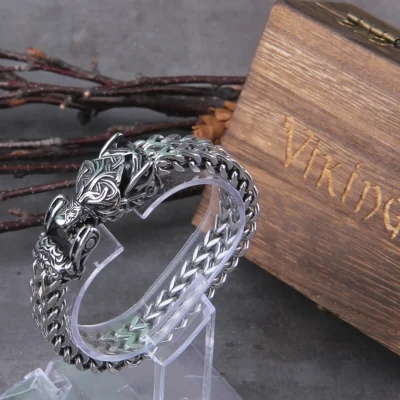The Red Dragon – An Ancient Emblem of Wales
The fearsome red dragon is one of the most enduring and iconic symbols of Wales. It adorns flags, coats of arms, art, and all manner of patriotic Welsh merchandise. The popular image of the Welsh dragon is most frequently seen as a giant, towering beast, wings outstretched, claws extended, tongue lashing from its mouth. Yet the roots of the Welsh dragon emblem stretch back through medieval legends and texts before evolving into a vital representation of identity and culture.
Myths to Military Banners of Identity
This article explores the rich symbolic origins of the red Welsh dragon and its journey from prophetic visions and stories to a banner of struggle against invasion to arguably the most important national emblem of Wales. We follow the threads of its early mythological beginnings involving wizards and prophetic poems, to accounts of battles between Britons and Saxons, to its adoption as a royal symbol of Henry Tudor, and finally its persistence as an iconic image deeply entwined with Welsh history and language and integral to Welsh nationalism today.
The Welsh dragon arose from magic and legend before materialising through the turmoil of war and politics as a defiant symbol of identity. It represents concepts like power, strength, prestige, and continuity that have made it not only a prominent feature of Wales the nation but also an integral part of what it means to be Welsh.
Origins in Old English Texts
Geoffrey of Monmouth’s History of the Kings of Britain

One of the earliest written accounts highlighting the red dragon as an emblem of Wales comes from Geoffrey of Monmouth’s 12th century literary work, History of the Kings of Britain. This chronicle records a mythical narrative history of Britain from its first legendary Trojan ruler King Brutus to the loss of native British rule after Roman withdrawal. A notable story features the red dragon in a prophetic dream vision seen by British king Cadwallo foretelling events in a future battle against the Saxons
The Struggle Between the Dragons
Upon a river bank, Cadwallo sees a red dragon and a white dragon locked in mortal combat until the red dragon drives off the white. Nearby, an angelic figure explains that this portends the state of Britain, saying “The Red Dragon symbolises the Welsh resisting the White Dragon or Saxons. Despite wounds, he will rise up, shake himself, and return for victory. Though oppressed for so long by the white dragon, the people represented by the red will drive out the English.”
This story draws clear parallels to Wales’ ongoing conflicts with Anglo-Saxons invaders in defence of Britain both in Geoffrey’s time and stretching back centuries prior. The dragon became a symbolic expression of British freedoms and identity triumphing against its enemies seeking to dominate the land.
Prophetic Visions of Merlin
One famous myth tells of King Vortigern attempting to build a tower that kept collapsing. Upon seeking counsel, he learns that the foundation is unsteady due to a hidden pool containing two dragons that represent the native Britons and invading Saxons. The red dragon defeats the white after a fiery battle, signifying British rule persevering over foreign threats. Merlin explains to Vortigern that this omen bodes well for Britain’s future sovereignty.
Appearing Across Prophetic Poems and Songs
References to the red dragon appear throughout prophetic medieval poems and songs linked to Merlin as well. The Conversation of Merlin and his Pig from the 6th century features visions of a red dragon in the skies alongside a howling wolf and lion. In The Book of Taliesin from the 12th century, Merlin foresees a great red serpent battling Germanic tribes and picts across the land. Such works reinforce the red dragon’s symbolic ties to combat and martial defence of Britain through the ages.
These stories capture key facets of the red dragon mythos that still resonate in Wales, enriched by each retelling over centuries. The dragon’s qualities of power and leadership against invading darkness would see it materialise from poetic visions into an embodied defender of identity.

Use as an Official Royal Symbol
Henry Tudor’s Claim to the Throne
The next stage in the red dragon emblem’s journey sees it taken up as an official symbol of royalty under the Tudor dynasty. Henry Tudor, who would become King Henry VII after victory in the Wars of the Roses, traced his lineage back to old Welsh nobility and the legendary King Arthur to help legitimize his contested claim to the English throne. As a powerful signifier of his Welsh heritage, Henry embraced the Welsh dragon mythos and flew the red dragon banner at key battles including his decisive triumph at Bosworth Field in 1485.
Coronation and Royal Standard of Henry VII
Once crowned, the red dragon banner featuring a golden crown around the dragon’s neck was displayed at King Henry VII’s coronation in Westminster Abbey. His royal coat of arms also incorporated the Welsh dragon along with the English lion. The emblem had evolved from legendary beginnings and prophecies into a tangible symbol of royal authority proclaimed across banners, flags, standards, buildings, seals and manuscripts during Henry’s reign. Such visible use of the heraldic red dragon projected Henry VII’s Welsh lineage as central to his legitimacy while boosting its prestige in the eyes of nobles and commoners alike.
You Might Like These
-
Born of Fire Made of Legend T-Shirt – Welsh Dragon Design
Price range: £19.10 through £35.86 -
Cymru Welsh Dragon Minimalist T-Shirt – Gildan 5000
Price range: £19.10 through £32.90 -
The Red Dragon Rises T-Shirt – Welsh Dragon Shirt
Price range: £19.50 through £27.99 -
Believe in Dragons T-Shirt
Price range: £19.10 through £35.86
Persisting in Modern Welsh Culture and Nationalism
The Welsh Dragon as Patriotic Symbol
The Welsh dragon remains an iconic patriotic symbol central to Welsh identity today. While its lineage traces back over a thousand years, the emblem continues to feature extensively as a symbol of national pride across virtually all aspects of modern culture. From street names to flags flying from homes, public art and tattoos on proud Welshmen, the fiery red dragon can be seen on display at every turn.
The Red Dragon in Sports and Events
In competitive events, the Welsh dragon plays an important role in asserting the country’s presence on the global stage. The rugby team belts out the national anthem before match kickoffs under the dragon crest. For football fans, badges and banners bearing the red dragon fly at stadiums during games, especially biennial clashes with the English national team. The Welsh dragon also makes appearances at cultural events like the Eisteddfod performing arts festival or the Llangollen International Musical festival promoting national heritage.
An Ancient Symbol Enduring in Identity
The red dragon remains such an integral patriotic symbol in Wales due to its enduring legacy stretching back across Welsh history, culture and language. While legends of prophetic red dragons defending the land may be fanciful myths, this symbolism still resonates strongly as a talisman representing the spirit of the people. Displaying the Welsh dragon continuing to fly high pays tribute to its origins as a symbol of resilience as well as the long memory of a nation.
The Welsh Dragon – From Ancient Myth to Modern Emblem
The iconic red dragon of Wales has a rich symbolic history spanning centuries of stories, myths, poems, records, and chronicles tied intrinsically to the country’s cultural identity. We traced its early mythical origins in prophesies and legends of wizards and kings involving dragons battling in the earth and skies. These cast the dragon as an omen foretelling Britain’s sovereignty against invading forces. The written accounts expanded on those narrative storylines while mapping the emblem’s evolution.
The dragon banner unfurled on the battlefield as Henry Tudor, boasting Welsh lineage from ancient kings, slew Richard III to take the English crown. Later, proudly displayed on royal coats of arms, standards and seals, the dragon came to symbolise the Tudor dynasty’s right to rule. As the standard bearer through struggles past and present, the red dragon remains an iconic patriotic symbol etching the promise of victory against threat into the soul of Wales. Whether recounting myths of defense against Saxons, or rallying modern fans before matches, the enduring Welsh dragon represents the identity and indomitable spirit of the people inscribed for over 1,000 years.










